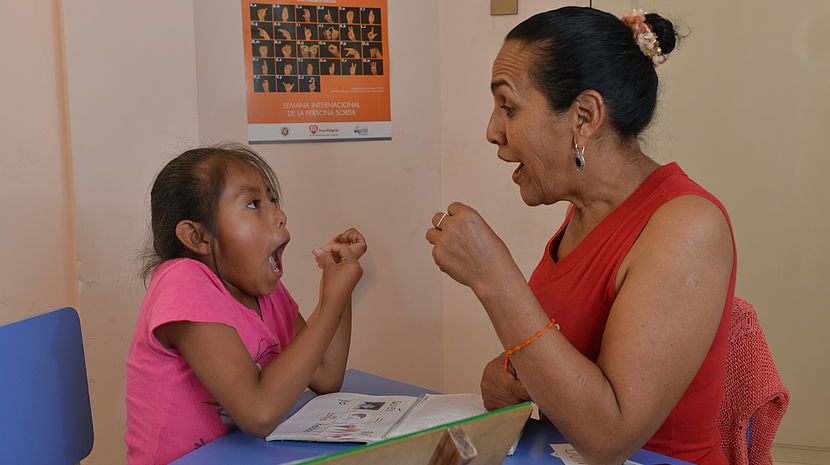21.09.2015 International Week of the Deaf 2015

This year’s theme for International Week of the Deaf is about the rights of deaf children to access sign language as a birth right. Indeed Article 24 Section 3b (CRPD, 2006) stipulates that governments have a responsibility to facilitate the learning of sign language and the promotion of the linguistic identify of the deaf community as well as deaf culture. Countries who have ratified the CRPD have signed up to this obligation.
Supporting this approach means recognising that deaf men, women, boys and girls have a right to access and use sign language as their main means of communication and belong to a linguistic minority group. They belong to a deaf community and have their own deaf culture. This approach recognises the linguistic validity of sign languages as a means to convey thoughts, emotions and ideas through its own grammatical lexicon, with equal status to spoken languages. As such, acquiring language through sign language should not be seen as the ‘last resort’; ‘we tried the oral approach and this failed, so we’ll try signing now; or ‘this group are too deaf, they started in the oral class, but failed, now we’re putting them in the signing section now’, rather than respecting sign language as a natural and intrinsic part of learning language and communication.
A misconception often made in the hearing world is that you have to speak in order to have a chance of learning language and literacy. Indeed it has been well documented that deaf children brought up in a signing environments have language and literacy levels akin to their hearing peers. In resource rich countries such as the US and UK, it has become very fashionable for parents and parents to be to attend sign language classes when their babies are born. Why? Again it is well documented that babies exposed to early sign language often communicate earlier than others.
Babies can gain control of their hands long before they develop the oral motor skills necessary for speech, so signs allow pre-verbal babies to express their thoughts without the usual frustrations.
According to researchers Linda Acredcolo, PhD and Susan Goodwyn, PhD (authors of Baby Signs: How to Talk with Your Baby Before Your Baby Can Talk (Contemporary Books, 2002)), with 20 years of research on the effects of Baby Signs on babies’ development, Sign Language can –
- help babies talk sooner and boost spoken vocabulary
- empower babies to direct adults’ attention to what they want to talk about
- reduce frustration
- provide a strong foundation for early literacy
- stimulate intellectual development
The challenge is to ensure that sign language is part of the learning environment of the home and school for all boys and girls who are deaf as well as their hearing peers and family members.
Why are we all not signing-speaking individuals?
The same could be asked about why don’t we all speak the same language or why don’t we all speak at least 5 languages?
There are many answers to this question, but here are some that I’ve put together:
- Just as with other languages each country will have it’s own spoken language(s) as well as dialects, so it is with Sign Language(s). Unless you have a deaf person(s) within your community, then you are unlikely to have exposure to the language and much less the will to learn it. Also whilst sign language classes are gaining momentum and more sign language interpretation is seen on TV, this is still not widespread.
- Learning to sign is the same as learning any spoken language, it takes time and requires skill and a well thought through curriculum to deliver the training.
- People are very willing and able to attend a few classes, but persistence requires more than just willingness.
A personal viewpoint:
I would ask that more governments recognise their national sign language as an official language.
I would also ask that they:
- make the national sign language (being sensitive to dialects / other signs used in different part of the country) available as part of the curriculum in school in order to encourage inclusion within communities
- provide resources for sign language research and development
- provide sign language and deaf culture classes taught by deaf people
- ensure the development of quality sign language interpreter (SLI) training
- ensure the employment of SLIs after qualification through ensuring that accessibility is available in all public departments e.g. Justice, education, health, elections
- ensure that deaf people are consulted in all aspects of social and community life.
However I would also ask that they provide choices in communication – ensuring that quality services are available for persons who are hard of hearing too, provision of close captioning, hearing devices etc. The world is diverse and the needs of the deaf community are also diverse.